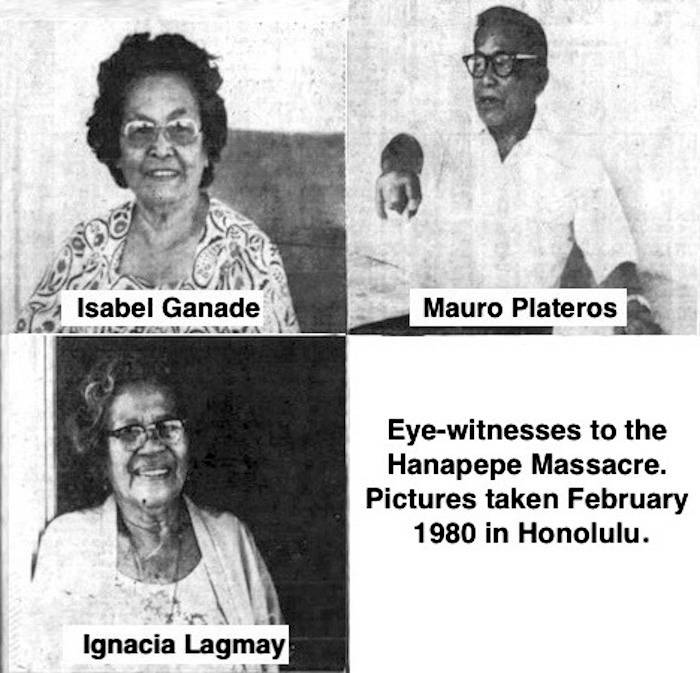On the morning of Sept. 9, 1924, a brief-but-furious, hand-to-hand fight broke out at Hanapepe, between as many as 200 striking Visayan sugar workers and 40 policemen that left 16 strikers killed and nine wounded, with four policemen also killed and two wounded.
Called the “Hanapepe Massacre,” it was the bloodiest confrontation in all of Hawai‘i’s labor history.
As a result, 130 strikers and their leaders were arrested and tried, and of these 56 were found guilty of riot and imprisoned, with many later being deported to the Philippines.
In 1980, 78-year-old Ignacia Lagmay, a witness to the fighting, vividly recalled the fear that gripped her as she hid inside her small Hanapepe home with her husband, a striker who did not participate in the fighting, and her 3-month-old child, while gunfire and fighting erupted outside.
“The time I stay inside the house, I can hear the guns: Pak! Pak! Pak! Pak! And oh, somebody only call the husband. That I can hear clear. Died in the wife’s arms. The bullet go inside the stomach. I listen to what the people screaming — somebody died, how many died. I so scared.”
Another witness, a reluctant striker named Mauro Plateros, remembered that on the night before the fighting, he was talking with a fellow striker who told him, “Oh, if anything happen, I’ll just run away.”
“But he was killed on that day,” said Plateros.
During the fighting, Plateros had fled into the nearby Brodie’s banana patch with other strikers and was stopped by a policeman who asked where he was going. “I running away,” he replied. “Go ahead,” the policeman said.
Plateros later surrendered voluntarily and was acquitted of riot charges.
Plateros’ wife at the time, Isabel Ganade, said she was on the front porch of the Japanese Language School when the shooting commenced and ducked inside as bullets splintered the wooden walls around her.
“I was really scared because it was really war,” she said.
She then ran to the neighboring Korean Tailor Shop and hid there all day.
•••
Hank Soboleski has been a resident of Kauai since the 1960s. Hank’s love of the island and its history has inspired him, in conjunction with The Garden Island Newspaper, to share the island’s history weekly. The collection of these articles can be found here: https://bit.ly/2IfbxL9 and here https://bit.ly/2STw9gi Hank can be reached at hssgms@gmail.com





Sounds familiar. I grew up in Flint Michigan and attended middle / high school in the 60’s. older teachers told stories of the national guard shooting and bayoneting striking auto workers on the 20’s. Henry Ford hired the Pinkertons to machine gun Rouge River Strikers from a river barge. The point is we owe a lot of our labor rights to the strikers of the 20’s who put their lives at risk to get fair pay and safe working conditions. What the Visayan workers experienced is very relevant to what we have today.
The fragments from the past are intriguing.